
Annual Forbs Around Las Vegas, Vegetation Around Las Vegas
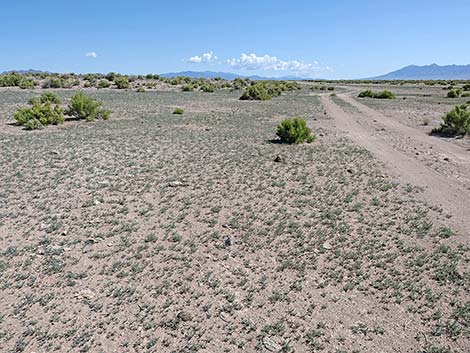 Halogeton can grow thickly on disturbed lands |
General: Halogeton (Halogeton glomeratus), also called Saltlover, is a spreading to upright annual forb with small, fleshy, swollen leaves that each has a spine at the tip. This plant favors disturbed areas with salty soils where it can concentrate salt in its tissues and at the soil surface. The flowers are small and individually inconspicuous, but there are so many flowers they can obscure the stems. Halogeton is an uncommon component of disturbed desert vegetation communities. Around Las Vegas, look for this species in town and in disturbed roadsides and open fields. This is an invasive weed. If you have this species on your private property, please consider eradicating it. This species is listed as a Noxious Weed in many western states, but not in Nevada. Family: Goosefoot (Chenopodiaceae). Other Names: saltlover, barilla, Anabasis glomeratus |
 Halogeton: young plant getting started |
Plant Form: Spreading to upright annual forb with stiff stems. Resembles tumbleweeds. Height: To about 18-inches tall. Stems: Branched, spreading at the base, then ascending. Develop reddish color as the plant ages. Leaves: Round, alternate, sessile, blue-green or grayish, fleshy, broadest at the tip, tipped with a spine. |
 Halogeton stems become red with age |
Flowers: Numerous, dense clusters of flowers in leaf axils that can obscure the stems. Lack petals, 5 sepals enclose the seeds. Seeds: Tiny, many per plant, contained inside sepals. Some seeds my stay attached to the dead stems during winter. Habitat: Saline and alkaline sites in arid and semiarid areas with few native plants; disturbed sites, dry lakebeds. Elevation: To about 6,000 feet. Distribution: Throughout the US; native to cold desert regions of Eurasia. Comments: This is an invasive weed. Feel free to pull it up. |
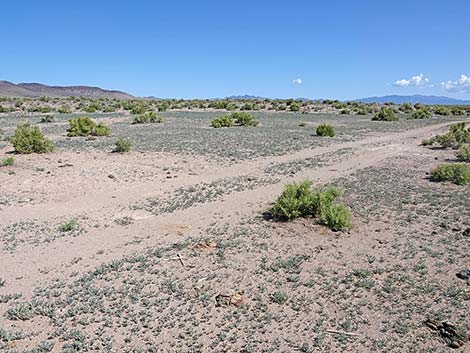 Halogeton can grow thickly on disturbed lands |
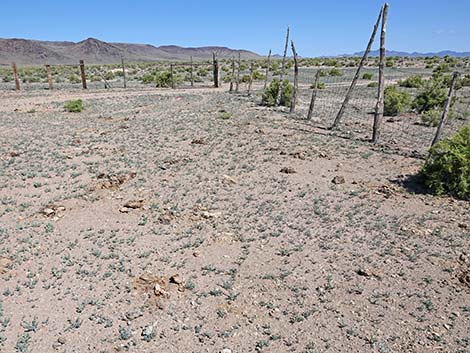 Halogeton can grow thickly on disturbed lands |
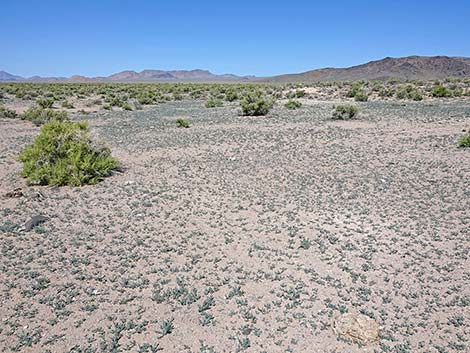 Halogeton can grow thickly on disturbed lands |
 Halogeton: large plant growing on roadside |
 Halogeton on roadside |
 Halogeton: top-down view |
 Halogeton with red stems |
 Halogeton with red stems |
 Halogeton with round, fleshy leaves |
 Halogeton: each leaf tipped with a spine |
 Halogeton: each leaf tipped with a spine |
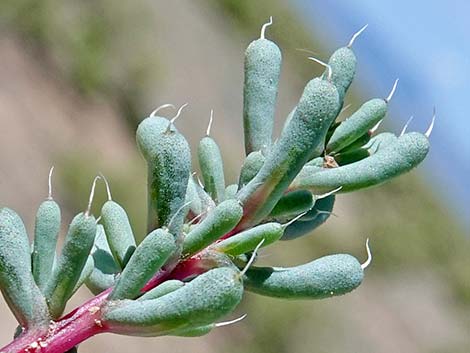 Halogeton: each leaf tipped with a spine |
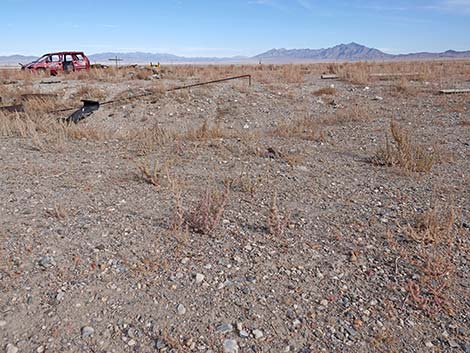 Flowering Halogeton during fall |
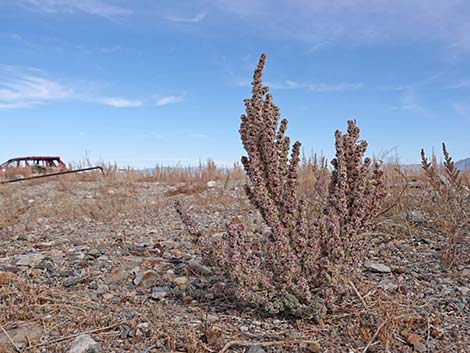 Flowering Halogeton during fall |
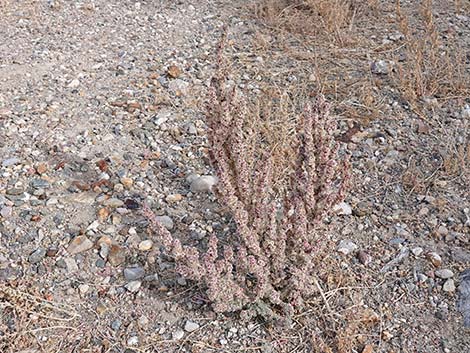 |
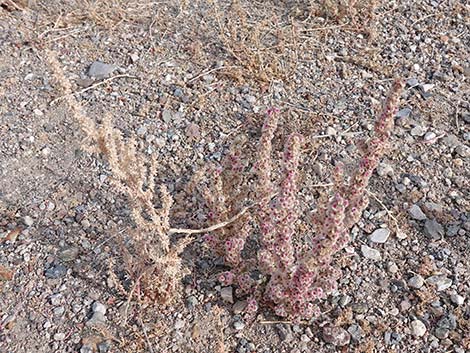 |
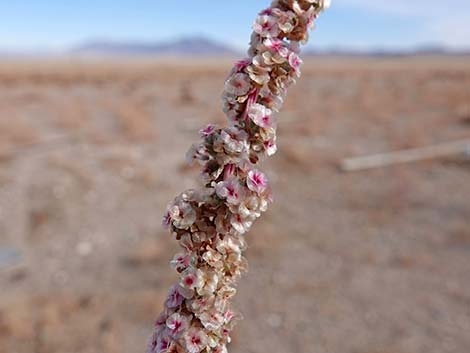 Flowers lack petals, but five sepals enclose developing seeds |
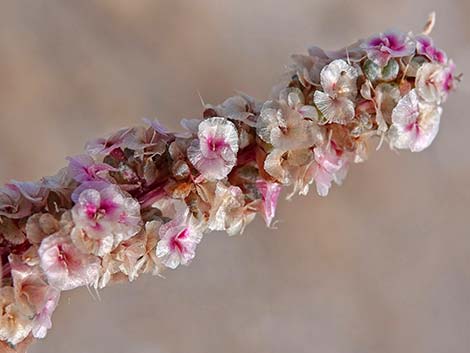 Flowers lack petals, but five sepals enclose developing seeds |
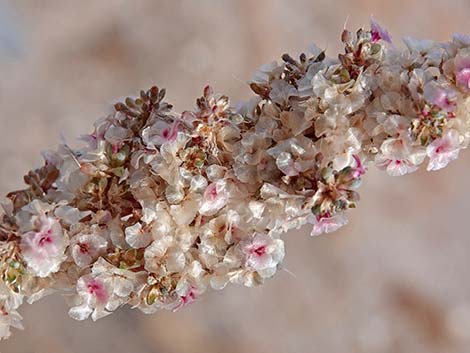 |
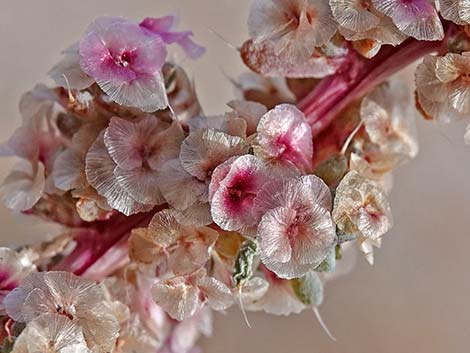 |
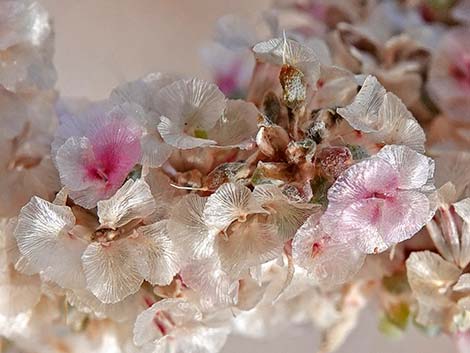 |
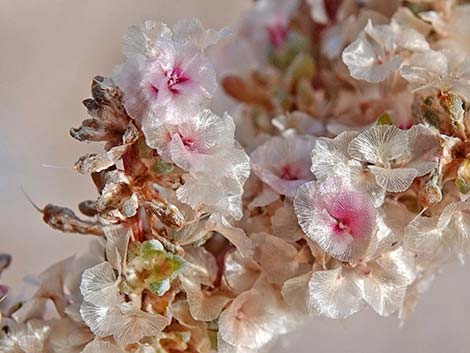 |
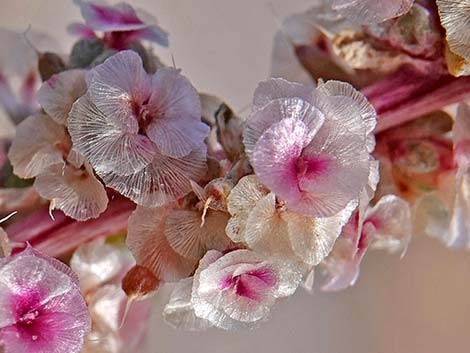 Flowers lack petals, but five sepals enclose developing seeds |
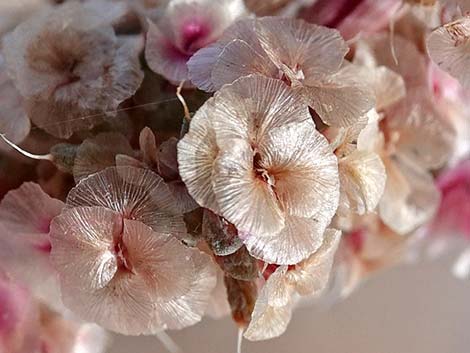 Flowers lack petals, but five sepals enclose developing seeds |
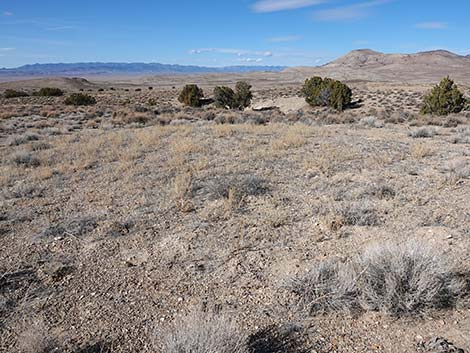 During drought, plant might die before flowering |
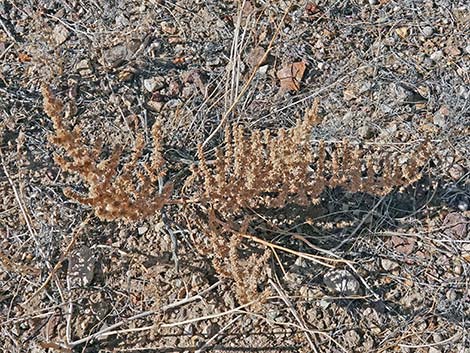 During drought, plant might die before flowering |
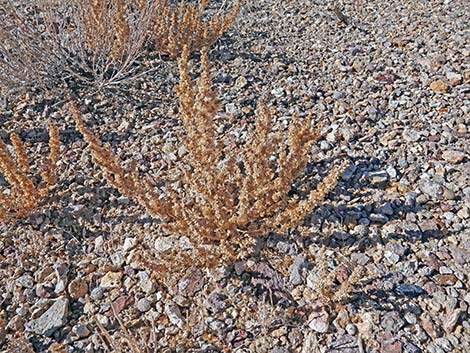 During drought, plant might die before flowering |
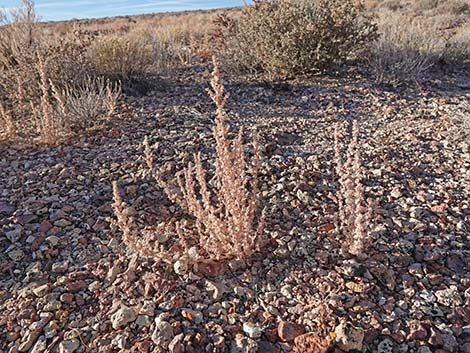 During drought, plant might die before flowering |
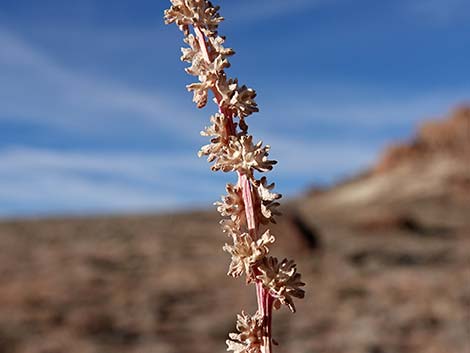 During drought, plant might die before flowering |
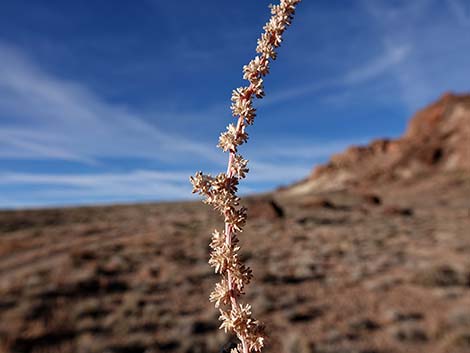 During drought, plant might die before flowering |
Note: All distances, elevations, and other facts are approximate. Names generally follow the USDA database.
![]() ; Last updated 241202
; Last updated 241202
| All Annual Forbs | Plant Species Index | Glossary | Copyright, Conditions, Disclaimer | Home |